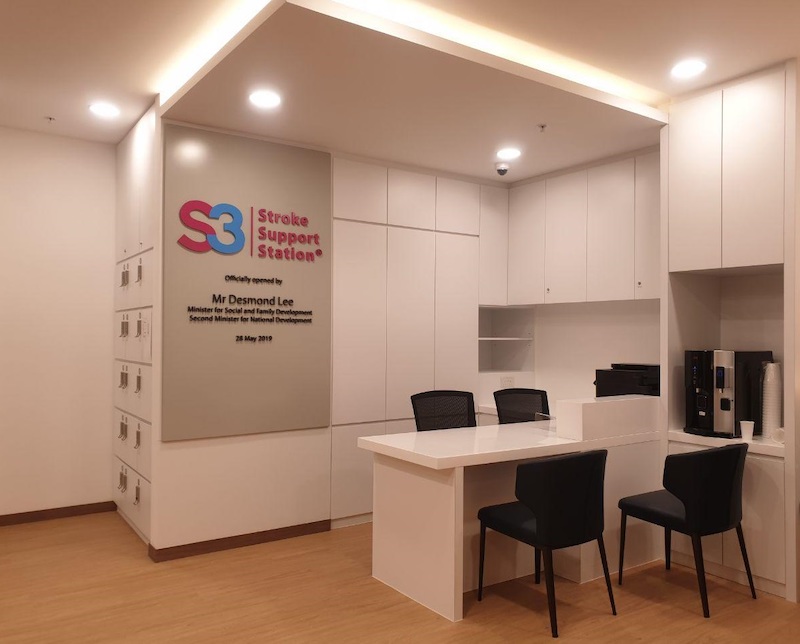It’s time to stave off those weekly mala lunches and late-night instant noodles.
Here’s why.
37-Year-Old Woman Ignores Headaches For a Month and Eventually Suffers a Stroke
Think that only aunties and uncles can get a stroke?
You’re wrong. A stroke may happen to anyone at any time, including you.
Chen Ruoyin (hanyu pinyin), 38, suffered a stroke when she was 37. The scariest thing? This stroke manifested in its early stages as a mere headache.
In March 2022, Chen started to get frequent headaches throughout the month. Much like the rest of us would do, she assumed it had something to do with the weather, took some panadol and spared no thought to it.
Little did she know that this would eventually land her in an even more headache-inducing situation.
One fateful day last year, the unexpected happened. The 37-year-old suddenly passed out in the toilet at home—she had suffered from a stroke.

No Recollection of Events and Inability to Walk Independently
Chen had to be in and out of the hospital following the stroke. Unfortunately, due to the stroke, she had no recollection of these events.
Upon finding out that she had suffered from a stroke, she recalled being unable to face reality for the longest time, given that she had always been healthy and had no history of high blood pressure or other chronic diseases.
Further, Chen was now unable to walk independently and thereby could not return to work either. This stroke had thrown her off her path figuratively and literally.
While most of us would do anything to get an MC from work, suffering from a stroke is one step too far.
Join our Telegram channel for more entertaining and informative articles at https://t.me/goodyfeedsg or follow us on Twitter : https://twitter.com/goodyfeed
As a result, the then 37-year-old was stuck between a rock and a hard place. She could either do nothing or get down to work with rehabilitation treatments.
Fortunately, she chose the latter—and it would prove worth it in the end, albeit the taxing 10-month-long process.
Rehabilitation Journey Took Ten Months
The then 37-year-old started to go for rehabilitation treatments at the Stroke Support Station (S3 Station) in Jurong Point twice or thrice a week.

According to Lianhe Zaobao, these sessions gradually allowed Chen to regain her strength and mobility. Within three to four months, she started to see the fruits of her labour.
She went from being unable to walk and squat on her own to gradually climbing stairs and walking longer distances, to now being able to go out independently.
Now this is what people mean when they say someone’s a girlboss.
Having suffered a stroke at 37 and undergone an arduous rehabilitation process to achieve recovery, Chen has a message for all of us: A stroke can happen to anyone—seek medical attention for your ailments instead of ignoring them as she did.
Before you dismiss this as yet another sob story, we’ll have you know that the Health Promotion Board (HPB) says the same, too—no one is not at risk of a stroke. However, you can make some lifestyle changes in the name of stroke prevention.
Prevention of Stroke is the Best Protection: Lifestyle Modifications
Here’s a laundry list to identify the areas of your lifestyle that you can change to reduce the risk of stroke: quit smoking, limit alcohol consumption, have a healthy and well-balanced diet, exercise regularly and maintain a healthy body weight.
Do you see why you should cut down on those supper trips now?
Eat your greens, but also make sure your diet is rich in fruits, whole grains and low in fats. In other words, eating mala once in awhile is fine, but don’t have it for every meal.
According to HPB, if you’re suffering from chronic conditions such as high blood pressure, diabetes and high cholesterol, detecting them early and keeping them under control can help you reduce the risk of stroke.
Go for regular health screenings, take your prescribed medication and attend medical appointments as scheduled.
Don’t be a stubborn patient now. Listen to your doctor.
How to Spot a Stroke: The FAST Method
If you didn’t already know, here’s how to spot a stroke before it’s too late: using the FAST method.
Check whether the Face is dropping on one side, whether both Arms can be lifted and kept there and whether Speech sounds strange or unclear. If you spot any of these signs, it’s Time to call 995 immediately.
We’d say not to mistake a drunk person at Clarke Quay for having stroke symptoms now, but you should probably play it by ear—better to be safe than sorry. After all, alcohol does put you at a higher risk of a stroke.
Would you be jailed for being half-naked in public? Well, the answer will shock you. Seriously. Watch this to the end and you'll understand:




